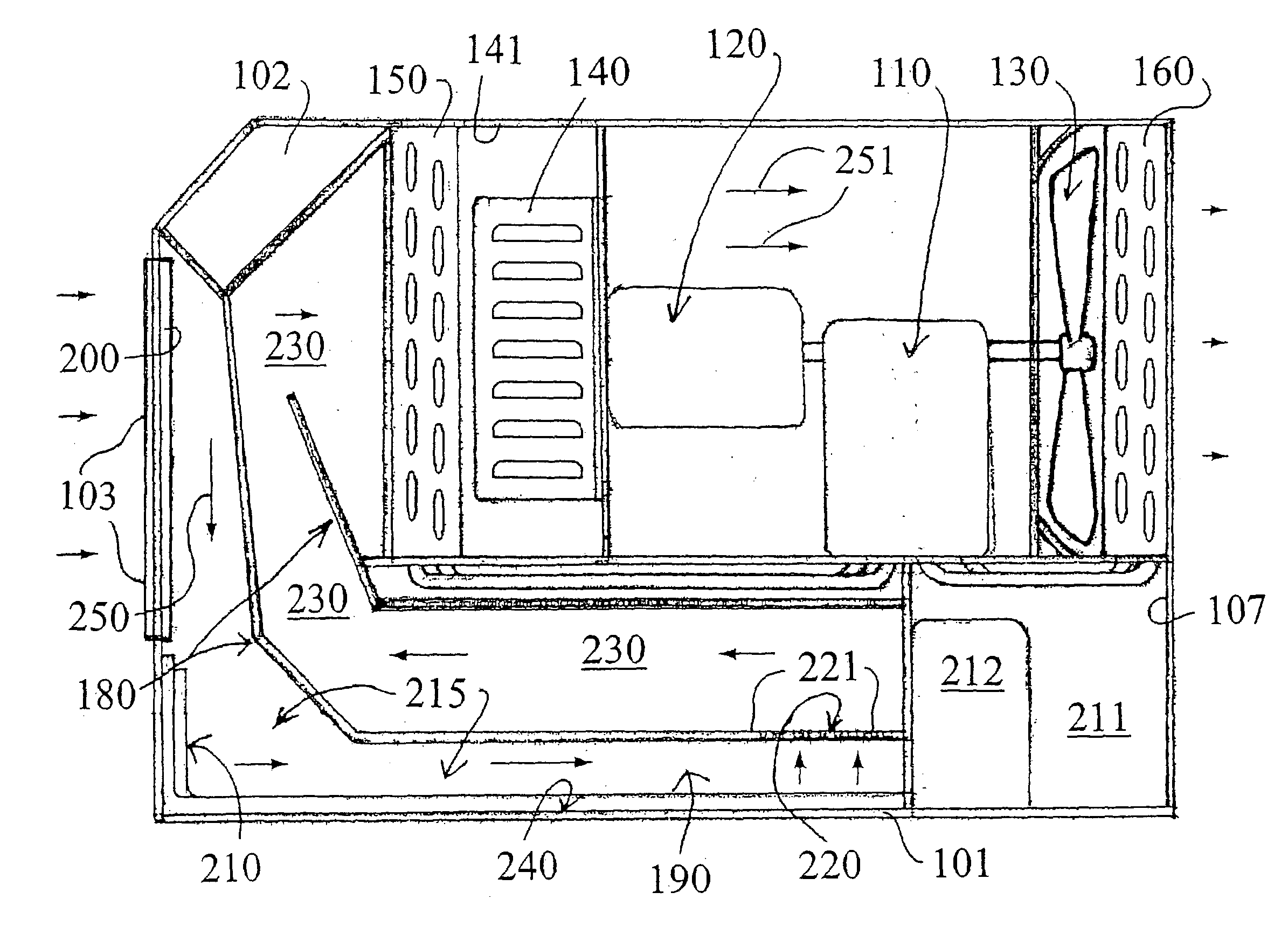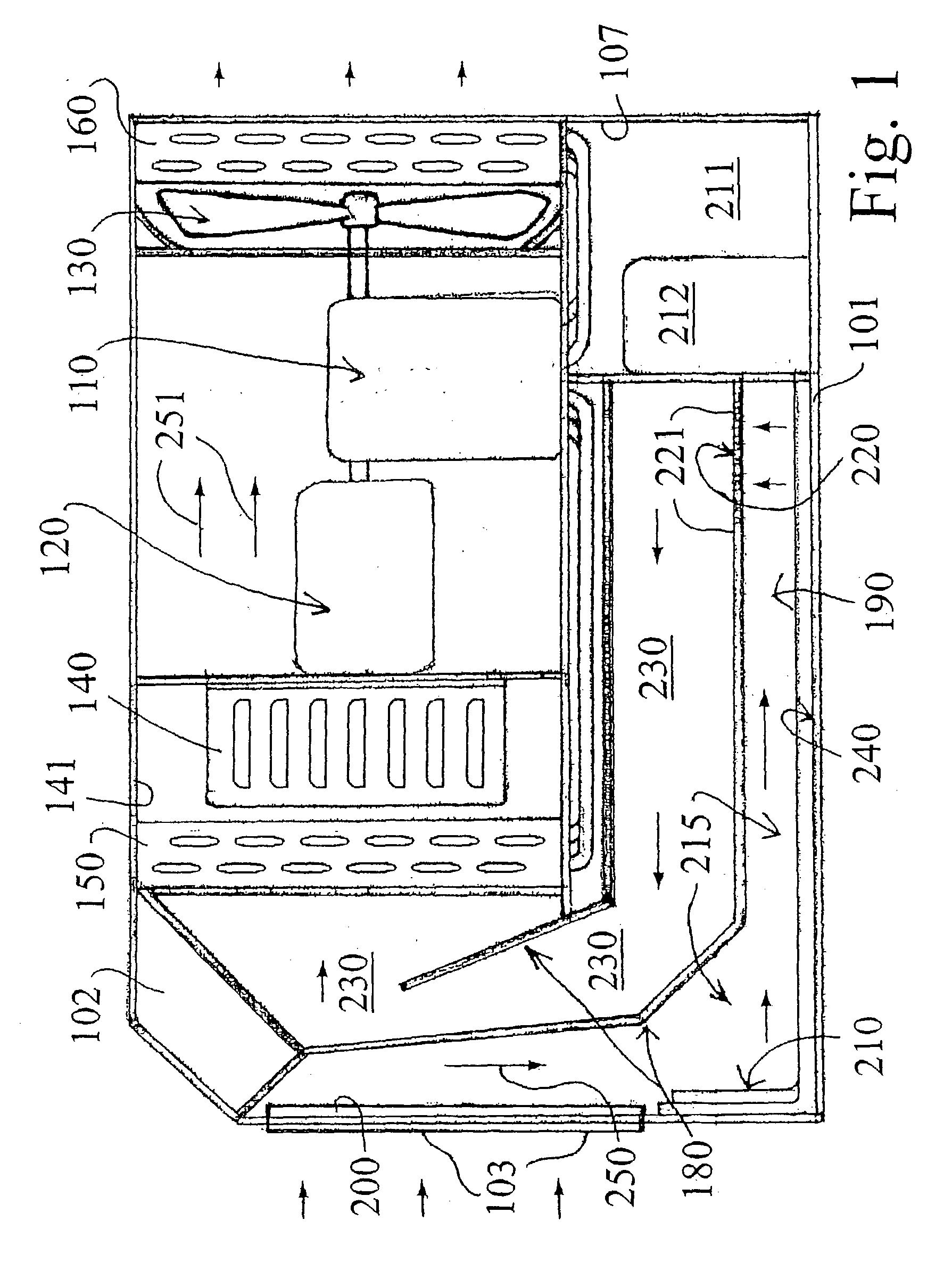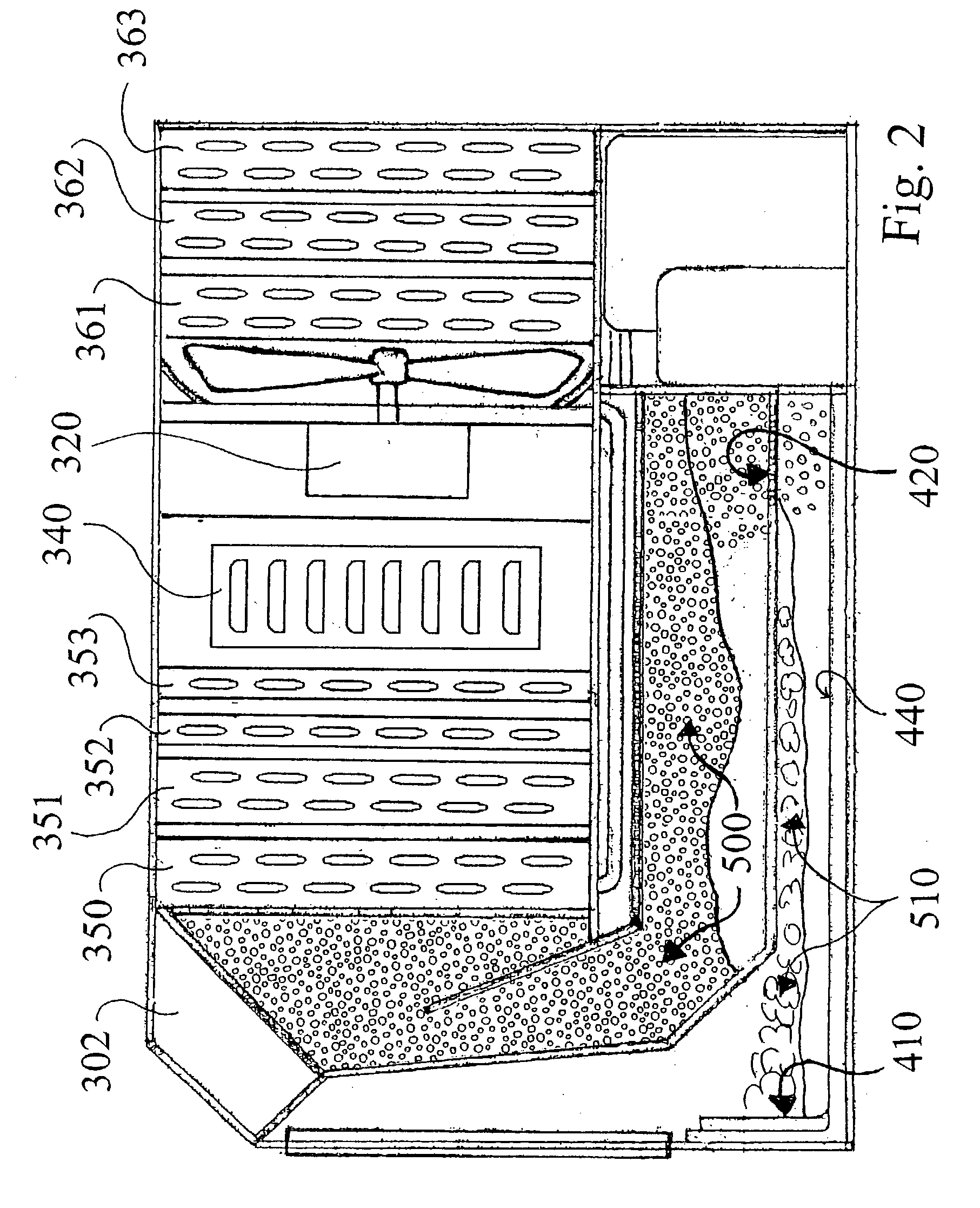Method and apparatus for filtering an air stream using an aqueous-froth together with nucleation
a technology of air stream and nucleation, which is applied in the direction of liquid separation agent, combination device, dispersed particle separation, etc., can solve the problem of air stream supersaturation, and achieve the effect of reducing relative humidity and increasing air volum
- Summary
- Abstract
- Description
- Claims
- Application Information
AI Technical Summary
Benefits of technology
Problems solved by technology
Method used
Image
Examples
third embodiment
[0080] FIG. 7 illustrates a third embodiment shown generally as 800 wherein a contaminated air stream is represented by arrows 801 moving through an intake line shown as 802. A fogger nozzle system shown as 805 injects a fine mist 806 into the incoming contaminated air stream. The contaminated air stream moves downwardly as shown by arrow 807 into a liquid reservoir 808 having a liquid surface level 809. The contaminated air stream diffuses into the liquid reservoir as shown by arrows 811, causing the formation of aqueous-froth shown generally as 815. The bubbles in the aqueous froth contact cooling air and surfaces 820, causing the nucleated contaminants inside each bubble to contact the cool metallic surfaces 820. The large, condensed particles simply drain back into the liquid reservoir 808 to be decontaminated and / or disposed of.
fourth embodiment
[0081] FIG. 8 shows a fourth embodiment filter shown generally as 900 which includes the various stages of the filter arranged within a vertical and cylindrically shaped housing 910. The incoming contaminated air enters intake 920 and is forced downwardly into a liquid reservoir 930, wherein the upper surface of the liquid is shown as 931. An aqueous-froth is created immediately above the liquid surface 931 and a series of fogger nozzles 935 injects a fine mist into the incoming contaminated airstream. The bubbles of the froth move upwardly to a condensation stage shown generally as 950, when the bubbles are cooled, as described above, and the contaminants are coalesced onto cold, preferably metallic surfaces, or air and drained downwardly into the liquid reservoir 930. The decontaminated air stream 960 is pumped through a dewatering stage, typically by vacuum to an exhaust 970.
[0082] FIG. 9 is a schematic illustration representing how a mobile filter according to the present invent...
sixth embodiment
[0083] FIG. 10 is a schematic illustration of the invention. This embodiment illustrates a typical design of an industrial filter shown generally as 1300 and constructed in accordance with the present invention. Contaminated air enters intake 1310 and is forced downwardly into a liquid reservoir 1320 having a liquid surface level 1321. Fogger nozzles are not illustrated in the interest of clarity but are utilized to introduce a fine mist into the incoming airstream before the contaminated air is diffused into the liquid contained in reservoir 1320. The contaminated air stream enters the froth chamber 1330 wherein the contaminants are subjected to the nucleation described above, and are returned downwardly into the liquid reservoir 1320. The decontaminated air shown as 1350 is pumped through exhaust 1360. The contaminants are pumped from liquid reservoir 1320 into a disposal or reclamation tank 1370 by a liquid pump 1371. A liquid filter 1375 is utilized to remove as many solid conta...
PUM
| Property | Measurement | Unit |
|---|---|---|
| Angle | aaaaa | aaaaa |
| Size | aaaaa | aaaaa |
| Temperature | aaaaa | aaaaa |
Abstract
Description
Claims
Application Information
 Login to View More
Login to View More - R&D
- Intellectual Property
- Life Sciences
- Materials
- Tech Scout
- Unparalleled Data Quality
- Higher Quality Content
- 60% Fewer Hallucinations
Browse by: Latest US Patents, China's latest patents, Technical Efficacy Thesaurus, Application Domain, Technology Topic, Popular Technical Reports.
© 2025 PatSnap. All rights reserved.Legal|Privacy policy|Modern Slavery Act Transparency Statement|Sitemap|About US| Contact US: help@patsnap.com



